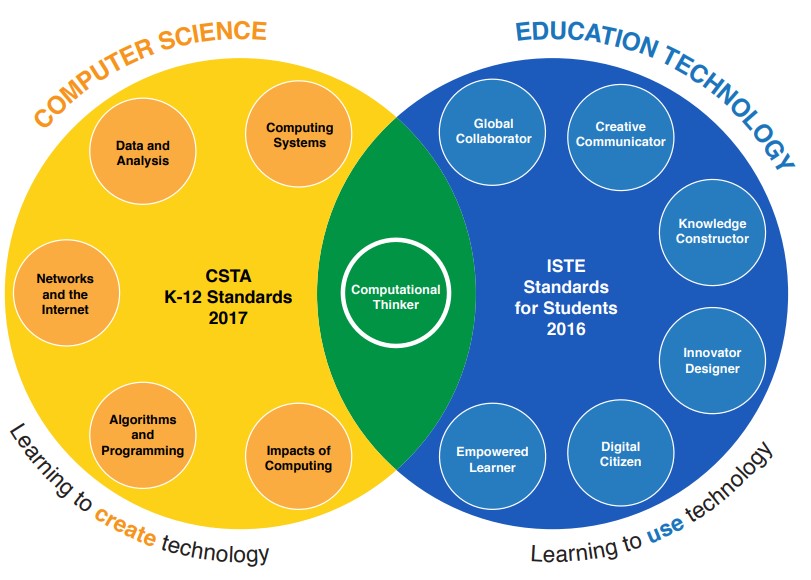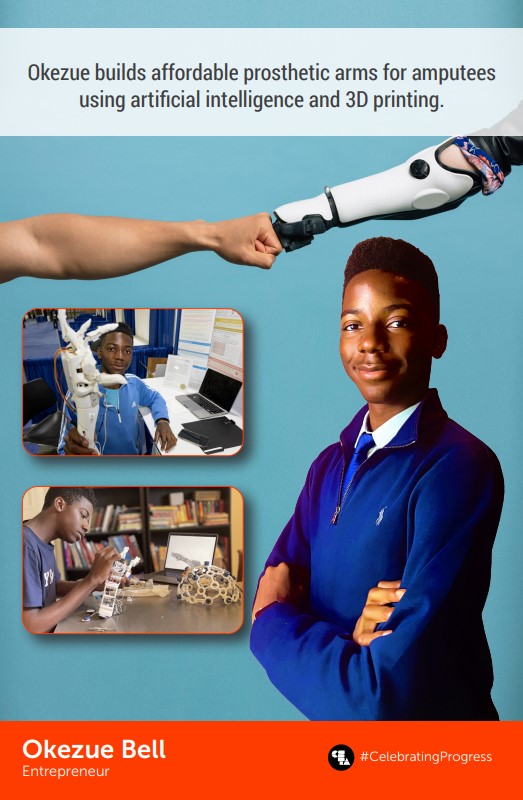K-12 Pathway Recommendations
Overview
It takes a village to create a successful K-12 Computer Science Pathway in your district. From K-5, 6-7, and 9-12 the strategies are varied and the approaches are fluid. On this page we provide guidance on how to promote a successful K-12 pathway at each education level and as a whole. If your district would like to explore how to create a comprehensive K-12 Pathway visit our SCRIPT training page. Read below for practical advice on how to create successful Pathway elements in your district!
But first some clarifying definitions...
Your full pathway
What is Computer Science Education?
Often we confuse "Computer Use" with "Computer Science," especially when planning courses and instruction. This is a common misconception!
Computer Science is not Digital Literacy or Digital Citizenship - Computer Science is an essential part of Digital Literacy and Digital Citizenship.
Computer Science Education - As the foundation for all computing, computer science is defined as “the study of computers and algorithmic processes, including their principles, their hardware and software designs, their [implementation], and their impact on society” (Tucker et. al, 2003, p. 6). Computer science is apart from and builds on computer literacy, educational technology, digital citizenship, and information technology. Source: Connecticut Computer Science Implementation Guidelines
Digital Literacy - the ability to use information and communication technologies to find, evaluate, create, and communicate information, requiring both cognitive and technical skills. Source: The American Library Association
Digital Citizenship - [Using] the skills and knowledge to effectively use the internet and other digital technology, especially in order to participate responsibly in social and civic activities. Source: Dictionary.com
As you can see, a comprehensive or cursory proficiency in Computer Science education can lead to stronger Digital Literacy skills and with appropriate guidance a student can become a healthy Digital Citizen.

Source: Adoption of State Standards Document
Elementary Education (K-5)
Elementary Education (K-5)

Source: BBC
K-5 is an important foundational time for establishing your Pathway. There are two approaches which districts can approach introducing CS Education at the K-5 band:
- Integrating Computer Science into already established curriculum and courses.
- Creating unique individual opportunities for Computer Science-based education.
Approaching Integrating Computer Science:
This has it's challenges as it assumes your current student-facing staff have some exposure to the concepts. This can turn many educators off in regards to the idea of adding Computer Science concepts into the classroom. Further many staff will push back on the concept of "adding" more to their curriculum with the limited time they have to cover their current demands.
That said at the K-5 level it's mostly important to focus on establishing conceptual knowledge of Computer Science such as "Computational Thinking" patterns and less on "adding two weeks to play with this Programming-themed toy." The BBC (yes that BBC) is a fantastic resource which clearly identifies the 4 building blocks of Computational Thinking:
- Algorithms (the sequences of instruction that create a process)
- Abstraction (the removal of detail to emphasize the core nature of the concept)
- Decomposition (the breaking down of large tasks into smaller, more manageable tasks)
- Pattern Recognition (identifying when duplication is occurring and how to take action to simplify a process)
These concepts can be placed on a Classroom wall and highlighted as an educator progresses through their content. They can be emphasized, exercised, and incorporated into your current lesson and Unit plans. Consider ways an Unplugged activity can add physical manipulatives without added cost to your Program.
Lastly, in this space you can see how minimal Professional Development is needed to incorporate these foundational thoughts. They complement many SEL and Science-based processes and the uplift to incorporate is low.
Creating Unique Individual Opportunities:
While the integrated approach is an elegant-long term approach it is less effective at truly imprinting the excitement of creating with Computers like a dedicated time and space for CS Education. In speaking with our students they reflect on mostly on the dedicated times they enjoyed the "Hour of Code" during CS Education Week, or when they "played with that toy they programmed," or when that one teacher had that Girls Who Code club or did the Lt. Governors Coding Challenge, or when they did that two-week unit programming the robot to follow the colored lines they drew, or made a sunlight detector with their circuit board.
That said this requires a student-facing educator to have an intermediate knowledge of Computer Science education to truly embrace the educational moments to the fullest. This can be a limiting factor in the adoption of CS Education at the K-5 level, especially if multiple educators will direct the learning. That said a "Train the Trainer" approach works quite well in this instance. This provides a platform for your eager or already-tech-affinitied educator to gain official training and then over time roll out said training to their peers.
- That said, this comes with a warning as well. If districts use funds (public, grant, staff) to purchase CS-themed toys it is imperative the emphasis is not on teaching how to use the toy but the computer science concepts they are conveying. Toys will last in your classroom for 5 years before needing to be upcycled and throughout that time you'll be replacing batteries, materials, and training new staff on how to use them. Ultimately it's more important to focus on the fundamentals and save the moment for teacher PD.
Ultimately the combination of both approaches is best!
Integrating the core concepts of Computer Science is a integral part of your K-5 pathway. Computer Science-themed toys are equally as important to inspire and energize your students. Finding elegant ways to incorporate both into your Pathway is imperative for your Pathway's health.
Middle School Education (6-8)
Middle School Education (6-8)
Continuing the work started in the K-5 Pathway is important if you want to ensure a healthy Secondary level program. According to the Connecticut Computer Science dashboard this is the time when girls and underrepresented minorities will begin to drop off if not encouraged.
The advice from K-5 is still relevant here. Incorporating CS Concepts into your currently-established curriculum in combination with dedicated CS-related units will produce a healthy platform for your students to thrive.
That said there are three items to emphasize at the 6-8 Grade band:
- Create more dedicated opportunities for CS Education in both school-day lessons and extra curricular offerings.
- Emphasize positive representation for young women and underrepresented minorities succeeding in Computer Science.
- Further integration of Computer Science concepts in current course offerings.
Opportunities for CS Education:
Within the classroom successful 6-8 programs will introduce experiences such as Khan Academy (free) and online courses. These provide device-friendly opportunities for students to grapple with Computer Science concepts in more formal environments. For more examples of 6-8 appropriate and equitable Computer Science themed units visit this article and browse the Connecticut Educational Software Hub
Outside the classroom there are a plethora of clubs and contests for students to engage in such as:
- Lt. Governors Coding Challenge
- Girls Who Code
- Technovation challenge
- Cyber Patriot
- Code.Org activities such as the Hour of Code challenges.
Highlight the heroes
It's important at this age to push against societal gender and racial influences which would push otherwise interested and talented students away from Computer Science. Ensure you're highlighting Computer Science heroes and lifestyles so EVERY student can see themselves as a Computer Scientist!
Resources:
- CS Heroes from CSTA's Equity team.
- Notable Women in Computing Card Deck
- NCWIT's Resources (National Center for Women in Technology)
Integration into current course offerings:
Computer Science is more than just programming. By following our Computational Thinking logic from K-5 we can become familiar with using this thinking pattern in a variety of courses. One of the more emergent elements of Computer Science is Data Science. Data science is the study of data to extract meaningful insights for business and can be integrated into our Science classrooms with concepts like Data Clubs from NSF funded research and the Science+C program
In summary:
At this level further Professional Development is necessary for core teachers to integrate concepts into their core classes, dedicated educators to learn and guide prolonged learning in the classroom, and unconscious bias awareness training for all staff to ensure they fully believe EVERY student can succeed in Computer Science.

An example of representation in Computer Science
Secondary Level Education (9-12)
Secondary Level Education (9-12)
At this level we greatly emphasize the saying, "It takes a village." The lone Computer Science educator cannot create and support a multi-course pathway experience long term.
- School Counseling needs to be trained and familiar with CS to recruit and place students in Computer Science classes.
- School Administration must be flexible in finding funds and time to provide deep and rigorous Professional Development and flexibility in scheduling and enrollment numbers.
- Department heads need to be open to allowing cross-promoting of courses throughout the course catalog.
- Educators must have the energy to keep their ever-evolving material relevant, relatable, and rigorous to meet the needs of their ever-maturing students.
Advice for the Secondary level educator:
- Create activities which can be accomplished in the hallways - ensure your students are seen amongst the student body creating and playing with Computer Science.
- Hold annual events like the Hour of Code and a Technology Expo in places students can see the results of their peers hard work such as the Cafeteria or Library Media Center.
- Visit the Middle School(s) prior to Course selection to do a show and tell. Bonus points if you bring your students with you and let them lead.
- Offer professional development to your School Counseling staff so they can become aware of what exactly goes on in your courses.
- Push to offer ECE and AP credit to recruit high-GPA focused students.
- Build strong relationships with your Math & CTE departments for cross promotion.
- Push to offer Math credit for your AP and other high-level courses. ("It's Pre Cal or that Computer course...")
- Create an award to highlight achievement and include it in the school's end-of-year award ceremony.
- Create an after school club or an Honor Society to further promote involvement.
- Offer a mix of semester and year long courses to catch all levels of student.
- Seek out Perkins (for CTE) funding whenever appropriate.
- Stay involved in your local CSTA chapter! (That's us!)
Advice for School Counselors:
- Become a member of NCWIT's Counselors for Computing!
- Visit your Computer Science classroom to see what it looks like!
Advice for Building and District Administration:
- Be open to cross-promote Computer Science classes throughout multiple departments.
- Be flexible with awarding various credit (Math vs STEM) and who teaches said courses.
- Seek out Perkins (for CTE) funding whenever appropriate.
- Be patient with enrollment numbers - Computer Science courses do not have the advantages legacy courses do - as such students and adults do not understand their composition and value.
- Train current technology friendly teachers and hire industry veterans. Both have value and when working together can create a deep and rich Pathway.
- Promote cross-curricular collaboration amongst departments and classrooms to create authentic and integrated experiences.
- Don't put the onus of enrollment on the Educator. Computer Science is an ever-changing field. Our software changes rapidly, our current events are outdated the second we share them, and our demands for training are constant. We have to constantly reinvent ourselves while also being the loudest cheerleader for our content.
For how to setup your Secondary level pathway, visit our Curriculum Resources for more direction.